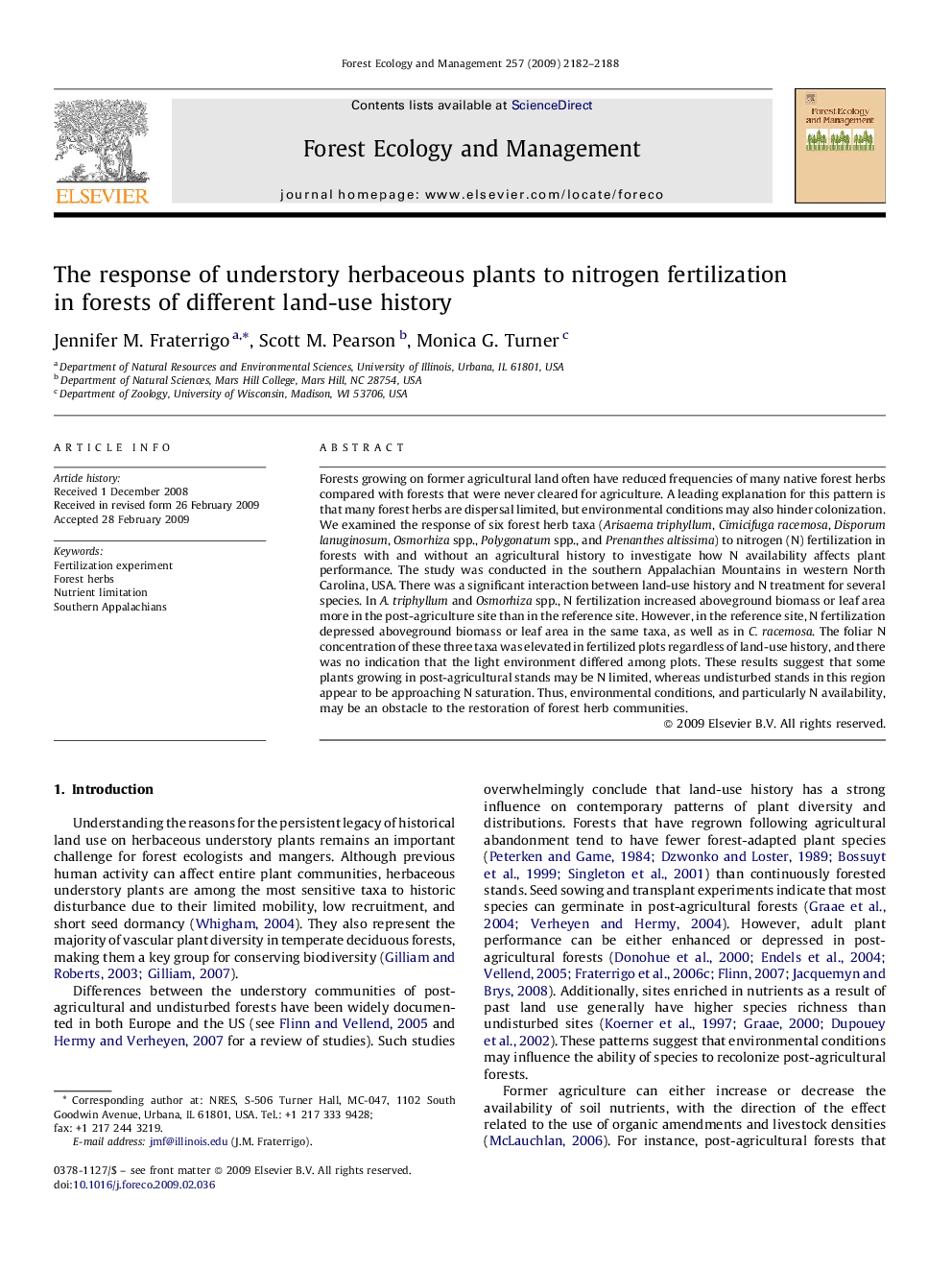| Article ID | Journal | Published Year | Pages | File Type |
|---|---|---|---|---|
| 88736 | Forest Ecology and Management | 2009 | 7 Pages |
Forests growing on former agricultural land often have reduced frequencies of many native forest herbs compared with forests that were never cleared for agriculture. A leading explanation for this pattern is that many forest herbs are dispersal limited, but environmental conditions may also hinder colonization. We examined the response of six forest herb taxa (Arisaema triphyllum, Cimicifuga racemosa, Disporum lanuginosum, Osmorhiza spp., Polygonatum spp., and Prenanthes altissima) to nitrogen (N) fertilization in forests with and without an agricultural history to investigate how N availability affects plant performance. The study was conducted in the southern Appalachian Mountains in western North Carolina, USA. There was a significant interaction between land-use history and N treatment for several species. In A. triphyllum and Osmorhiza spp., N fertilization increased aboveground biomass or leaf area more in the post-agriculture site than in the reference site. However, in the reference site, N fertilization depressed aboveground biomass or leaf area in the same taxa, as well as in C. racemosa. The foliar N concentration of these three taxa was elevated in fertilized plots regardless of land-use history, and there was no indication that the light environment differed among plots. These results suggest that some plants growing in post-agricultural stands may be N limited, whereas undisturbed stands in this region appear to be approaching N saturation. Thus, environmental conditions, and particularly N availability, may be an obstacle to the restoration of forest herb communities.
